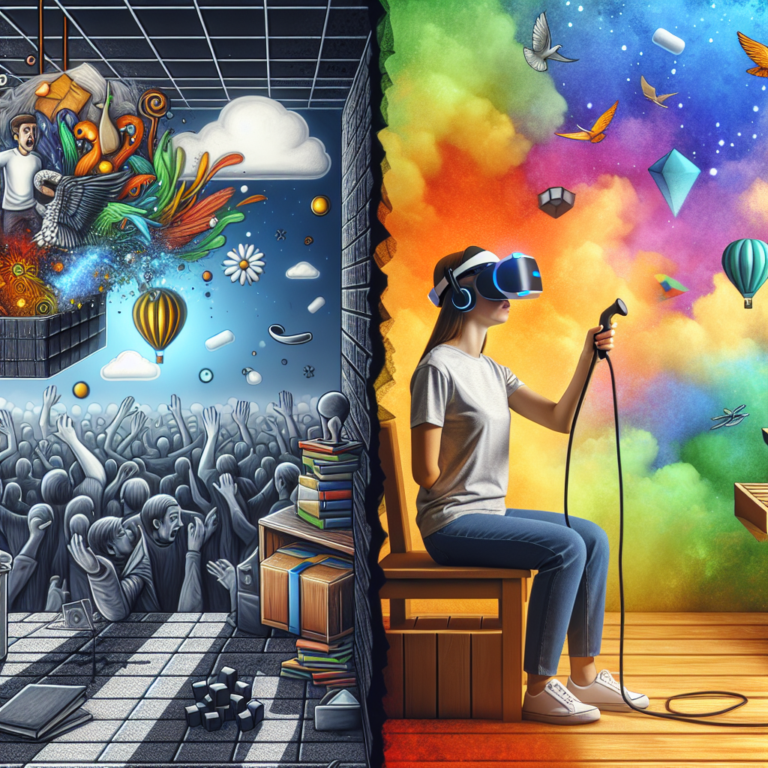Virtual Reality Therapy: The Power of Virtual Reality in Phobia Therapy
Understanding Phobias: What Are They?
Phobias are intense, irrational fears that can disrupt daily life. Whether it’s a fear of heights, spiders, or public speaking. These anxieties can lead individuals to avoid situations that trigger their fears. What if there was a way to confront these fears in a controlled environment, one that is safe yet engaging? Enter Virtual Reality (VR), a groundbreaking technology that has the potential to reshape how we address phobias.
What Makes Virtual Reality an Effective Tool for Phobia Treatment?
Virtual Reality immerses users in a computer-generated environment, offering a distinctive and interactive experience. For example, this technology can simulate real-life scenarios that evoke phobias, enabling individuals to face their fears within a controlled and secure environment.
1. Gradual Exposure Therapy
One of the most effective methods for treating phobias is exposure therapy. Where patients are gradually exposed to the source of their fear. VR takes this concept a step further:
- Controlled Environment: In VR, individuals can engage with their fears at their own pace, whether it’s navigating a virtual crowded room or standing on a virtual ledge.
- Therapists can provide tailored experiences by customizing VR sessions to address specific phobias, progressively increasing exposure intensity as individuals build confidence. Additionally, immediate feedback allows users to understand their reactions in real time, enabling them to make adjustments and develop effective coping strategies.
2. Anxiety Reduction Through Immersion
Imagine being able to face your fear of flying or elevators without ever leaving your room! VR allows individuals to experience their fears without the real-world consequences:
- Control Over the Experience: Users can pause, rewind, or change the scenario, providing a sense of control that is often missing in real-life situations.
- Sensory Engagement: The sensory immersion of VR makes experiences feel more real, enhancing the therapeutic effect as users actively confront their irrational fears.
- Empathy Building: Virtual environments can also encourage users to see situations from different perspectives, aiding in the understanding of their fears.
Virtual Reality Therapy: Types of Phobias Addressed Through VR Therapy
Virtual Reality therapy can be applied to a variety of phobias, including:
- For individuals with arachnophobia, the fear of spiders, VR provides a controlled environment where users can gradually learn to identify and manage their fears effectively. Similarly, those with acrophobia, or a fear of heights, can benefit from simulations of high places, which help them build coping strategies and regain confidence in their physical abilities.
- In the case of aviophobia, the fear of flying, VR enables users to experience the entire flight process—from boarding the plane to cruising through the skies—helping them acclimate to the experience in a stress-free way. Likewise, for social phobias, virtual environments offer a platform to simulate social interactions, allowing individuals to practice and enhance their social skills without the pressure of real-world scrutiny.
The Therapeutic Process: What to Expect
Participating in VR therapy can be an exhilarating journey towards self-discovery and empowerment. Here’s what individuals can expect during the process:
1. Initial Assessment
A trained therapist will conduct an assessment to understand the specific phobia and its impact on life.
2. Development of a Personalized Treatment Plan
To ensure effective treatment, the therapist will create a customized VR experience that aligns with the individual’s comfort level while supporting their therapeutic goals.
3. Gradual Exposure in a Safe Environment
Through multiple sessions, users will engage with their fears in a structured way, gradually learning to manage and reduce their anxiety.
4. Integration of Coping Strategies
Therapists will introduce coping techniques, such as breathing exercises and positive visualization, to help manage anxiety both in VR and in real-life situations.
Success Stories: Real People Conquering Their Fears
As VR therapy gains traction, numerous individuals are sharing their success stories. Here are a few inspirational examples:
- John’s Journey: John, who previously couldn’t step foot in an elevator, found himself confidently riding up and down in a VR simulation, ultimately leading to him facing his fear in reality!
- For example, Lisa experienced liberation from her social anxiety by practicing interactions with virtual avatars, which eventually empowered her to make friends and participate in social events beyond the therapy room. Similarly, Mark achieved a significant milestone by overcoming his fear of flying through multiple VR sessions, allowing him to board an airplane for the first time and embrace new adventures.
Virtual Reality Therapy: The Future of Phobia Treatment Through VR
With the rapid advancements in virtual reality technology, exciting possibilities for phobia treatment are emerging. As a result, researchers and therapists are uncovering innovative applications, paving the way to reach more individuals and promote greater healing.
With VR therapy, individuals can embrace the opportunity to face their fears in a new light, turning what was once a source of dread into a pathway for empowerment and resilience. 🌟 Imagine the possibilities of a world where fear no longer holds individuals back from living their fullest lives!




0 Comments